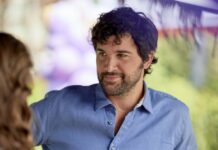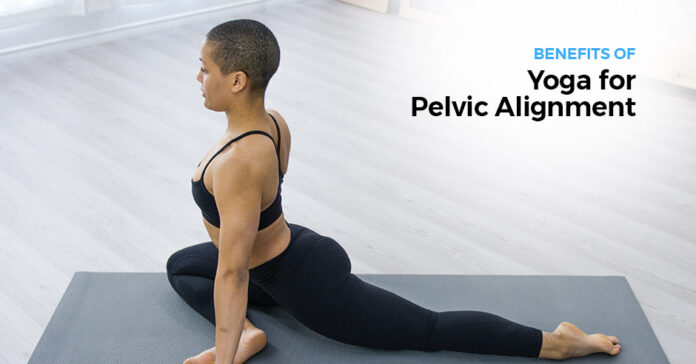Yoga is a practice that involves a series of postures and breathing exercises. It aims to improve your mental and physical well-being. This ancient art of living, as described in the texts, is an initiation path that transcends physical discipline.
The Yoga Sutraof Patanjali is where we find the first mentions of yoga. It was written around 200 years ago. This work explains the foundation of yoga philosophy and how it can be applied in every sphere of life.
- Dynamic yogas are those where the sequence of poses is performed to the beat of your breathing, such as vinyasa or ashtanga. These courses, which are quite physical, strengthen the cardiovascular system and soften the body.
- The Iyengar, a static form of yoga, emphasizes alignment. Here we take the time and dissect each asana, so we can understand our bodies.
- Hatha yoga can be practiced by anyone, even older.
It is crucial to choose the right style of yoga for you. This all depends on your potential.
To be able to enjoy the benefits of dynamic yogas it is a good idea to be in good health.
We recommend a slower yoga practice for those with back problems who aren’t athletic. This allows us to take the time to explain poses like Iyengar or hatha.
Types and styles of yoga
postures traditionals have been proven to be effective and have remained the same over thousands of years. However, Hatha Yoga has evolved and taken on new forms during the XXth century. Each style of yoga incorporates postures, breathing exercises, and meditation in a different way. They can be energetic, gentle, calm, or lively. These are the most popular yogas in West.
Anusara. John Friend created an entirely new type of yoga in 1997. It was quickly popularized and is now available in 70 countries. Its core philosophy is to celebrate the heart, and to find the good in all things.
Ashtanga. It is characterized by the synchronization between breathing and fast sequences of increasingly challenging postures. This greatly increases metabolism and body temperature. Ashtanga is great for endurance. A dynamic form of Power Yoga was created in the United States.
Integral. It was created in the USA in the 1960s and offers a balanced integration between postures, breathing techniques, meditation, relaxation, and meditation. (Not to be confused by Sri Aurobindo‘s spiritual approach, also known as integral yoga.
Iyengar. It is a disciplined, rigorous course that emphasizes alignment of the limbs, and above all the spine. There is no spiritual connotation. However, there is a meditative component.
Kripalu. Kripalu is a dance of energy, body and mind that emphasizes breathing techniques. This would be especially beneficial to the nervous, digestive and cardiovascular systems.
Kundalini.
It is primarily about awakening Kundalini, the original healing energy. This approach focuses on meditation through a series of postures.
Sivananda or Vedanta. The Sivananda organization offers the courses in its centers. Positive thinking, meditation, breathing and relaxation are all important. The spiritual aspect is very important.
Sudarshan Kriya. Sri Sri Ravi Shankar created this form of yoga in the 1980s. It is found in over 140 countries and relies heavily upon breathing to rebalance body and mind.
Viniyoga. Viniyoga is an integration of movement and breathing that allows for personalized teaching that is tailored to each person.
Prenatal yoga is a course that caters to the needs of pregnant women. The instructor will then help the women overcome their difficulties during pregnancy, ease the birth process and encourage a return to balance. Instructors might have practiced any of the above movements.
The benefits of yoga
When we speak of yoga today, we mean primarily the practice of pranayama and asanas. These are the postures that aim to strengthen and soften the body and the breathing exercises that regulate the flow and distribution of vital energy.
Yoga has many physical benefits, including muscle relaxation. There are many yoga postures to stretch all major muscle groups. While some postures build muscle slowly, others help to balance the body.
Regular practice can correct any posture problems that have developed over time, which will greatly reduce the risk of developing chronic back problems. Temple University’s 2008 study showed that Iyengar yoga can improve balance in women aged 65 and older.
Yoga helps reduce stress. The session is focused entirely on the body and breath. This is a form meditation. In 2010, Boston University published a study that showed yoga could be effective in relieving anxiety.
The carpet invites us to pay attention to our bodies, and to focus on the breath. Balance exercises, for example, require our full attention to maintain posture.
Poses to do at home
It is best to practice at home by doing simple poses so that you don’t injure your self.
Take a step forward with your feet together and place your right hand on the right side of your right ankle. Keep your right arm up in front of your left leg. You can do the same thing on the other side. Balasana (child’s pose) This is a great way to relieve tension in your lumbar region. Get on your knees, feet, and knees and then place your forehead on the ground. Next, bring your arms up and follow your breathing.
Yoga session in practice
Sessions can vary from one type to the next. The whole body should be warmed up before the lesson begins for dynamic yogas. Particular attention should be given to the muscles the professor is working on.
After warming up, we increase the intensity of our practice by adding a variety of balance and standing postures. We recommend stretching in sitting or lying positions for the last portion of the course. This is to slow down your heart rate. The session ends with “shavasana”, which is a dead man’s position. It involves lying down on your back and relaxing all your muscles.
What equipment should I use?
Yoga does not require a lot of material. However, a mat is sufficient for comfort. In some styles of yoga, such as the Iyengar, one can use “bolster”, which are large cousins that can be used to rest a portion of the body.
What is the training of a yoga teacher?
To deepen his understanding and improve his teaching skills, the yoga teacher must complete a 200-hour minimum training.
Yoga is both a lifestyle and an activity that benefits the mind and body. Yoga can improve flexibility and strength, as well as reduce stress and anxiety.
Also, read: What to Wear to Yoga Class? The Best Yoga Outfits for Beginners
Yoga history
Patanjali reveals Yoga as a path to Samadhi. This is the union with the original principle. There are 8 branches to this route. You must follow 8 branches to progress on the path to yoga.
Next comes asanas, which are the poses that we teach in yoga classes. They soften and strengthen our bodies and teach us how to be present in the moment.
Once we have mastered the practice of postures, we can proceed to the third step: pranayama. This is the regulation and harmonization of our breathing. Prana, our life force, is controlled by breathing exercises.
The path of the yogi (the person who does yoga) becomes more subtle. It includes concepts like the abstraction of the senses, meditation and unity with the higher principle.
Is yoga a religion?
Religion-related issues are extremely sensitive. The average person can’t decide what to do. So how can you avoid a multi-dimensional process such as yoga in the name religion? ?
It is actually that contractors decide whether it should be associated with religion. ?
Yoga is a holistic system that offers great benefits. It keeps your body, mind and money green. If you don’t get sick, you can save time and money.
Tell me, God of one religion doesn’t want his people to be healthy and rich.
You will practice yoga, and the God of that particular religion will tell you, “It is against us, and it doesn’t come under my control.”
Do you not love your body?
Is yoga only for Hindus?
It is possible to take the sun but not welcome it. ?
What religion opposes breathing in and out? ?
It is not possible to add it to any religion because it will benefit you just as much as other religions.
Is there a problem? Yoga or yourself?
It has been implemented globally by the international stage and all the countries have adopted it. Then where is the religion?
Because it’s beneficial for all who have adopted it, today is Yoga Day around the world.























